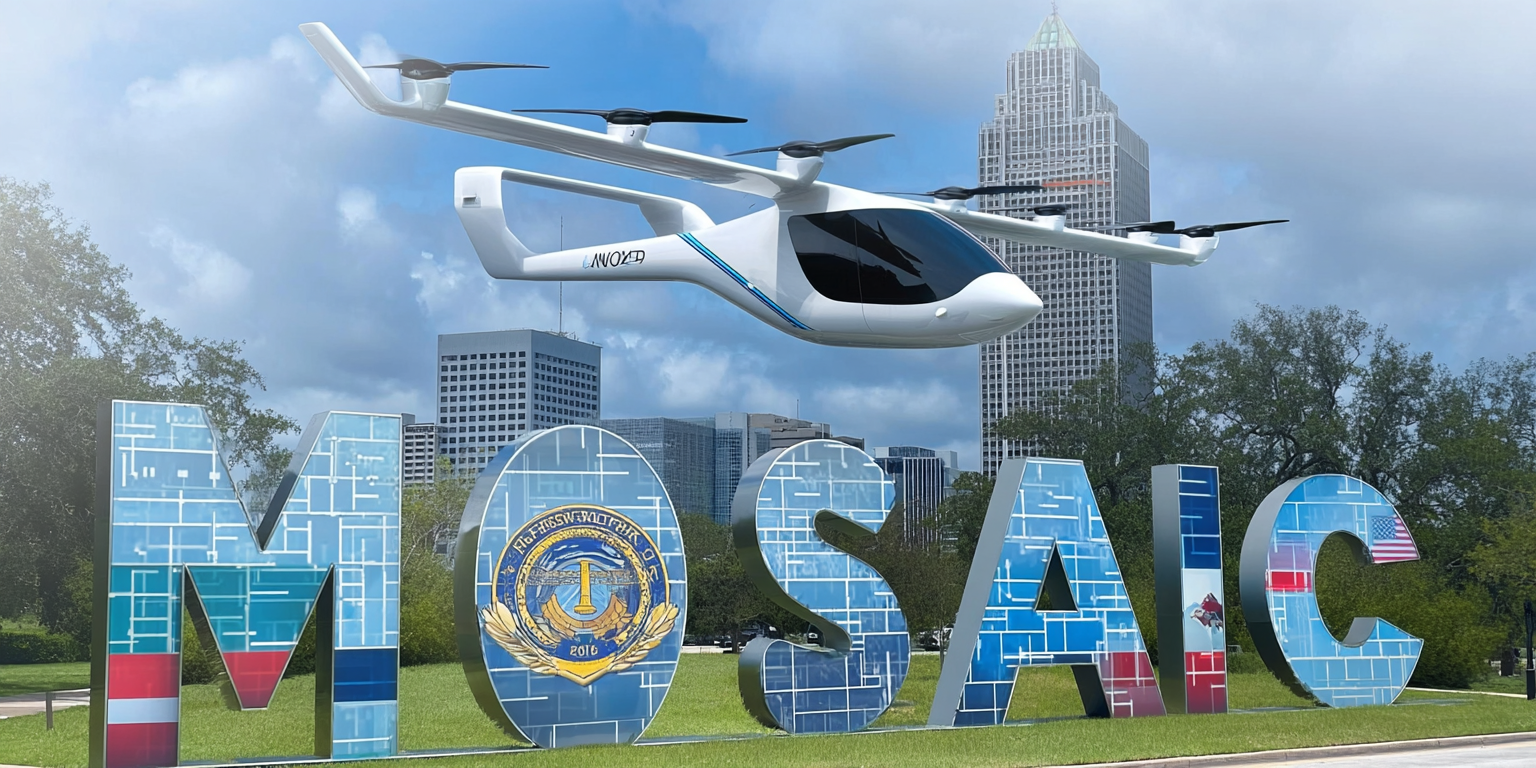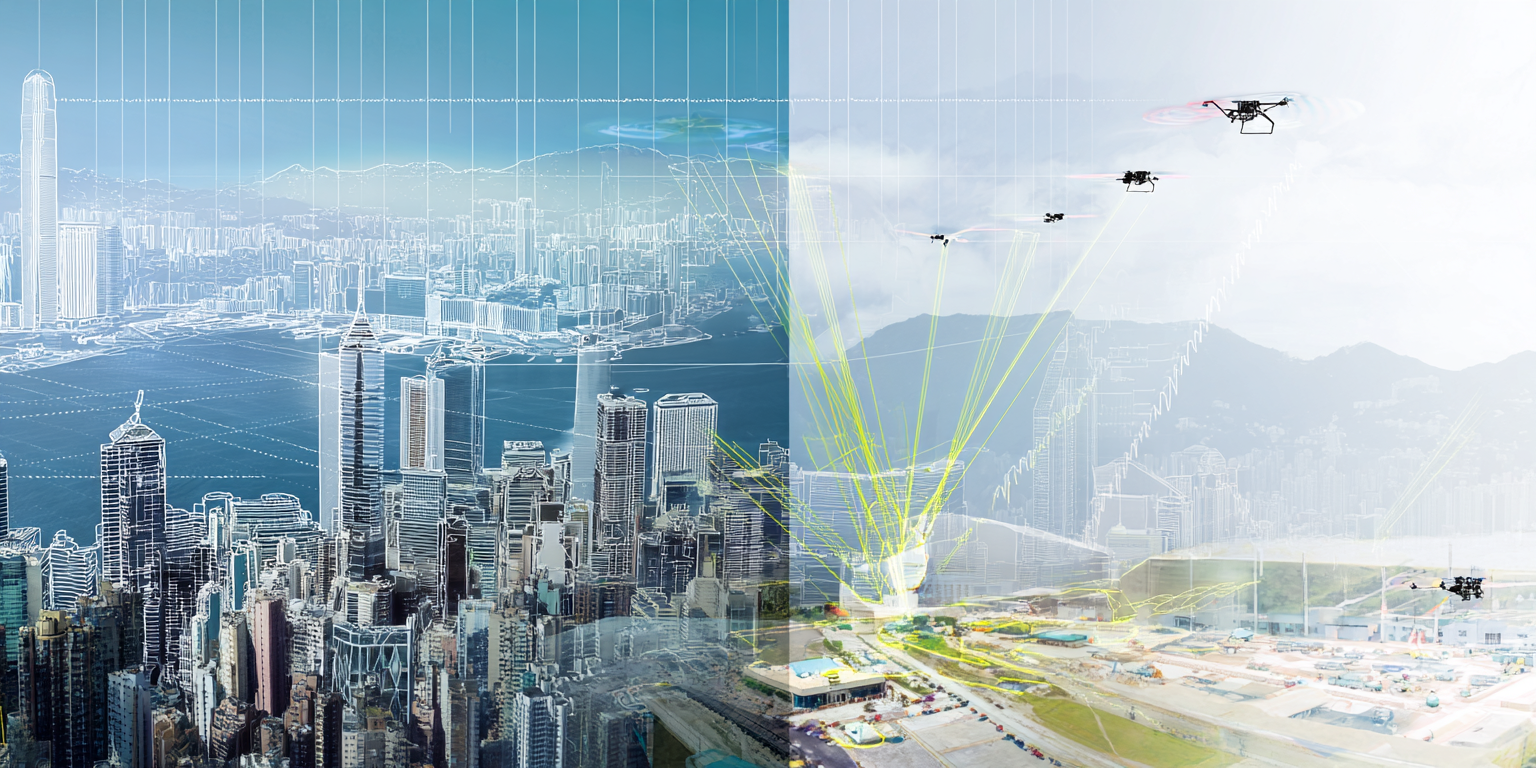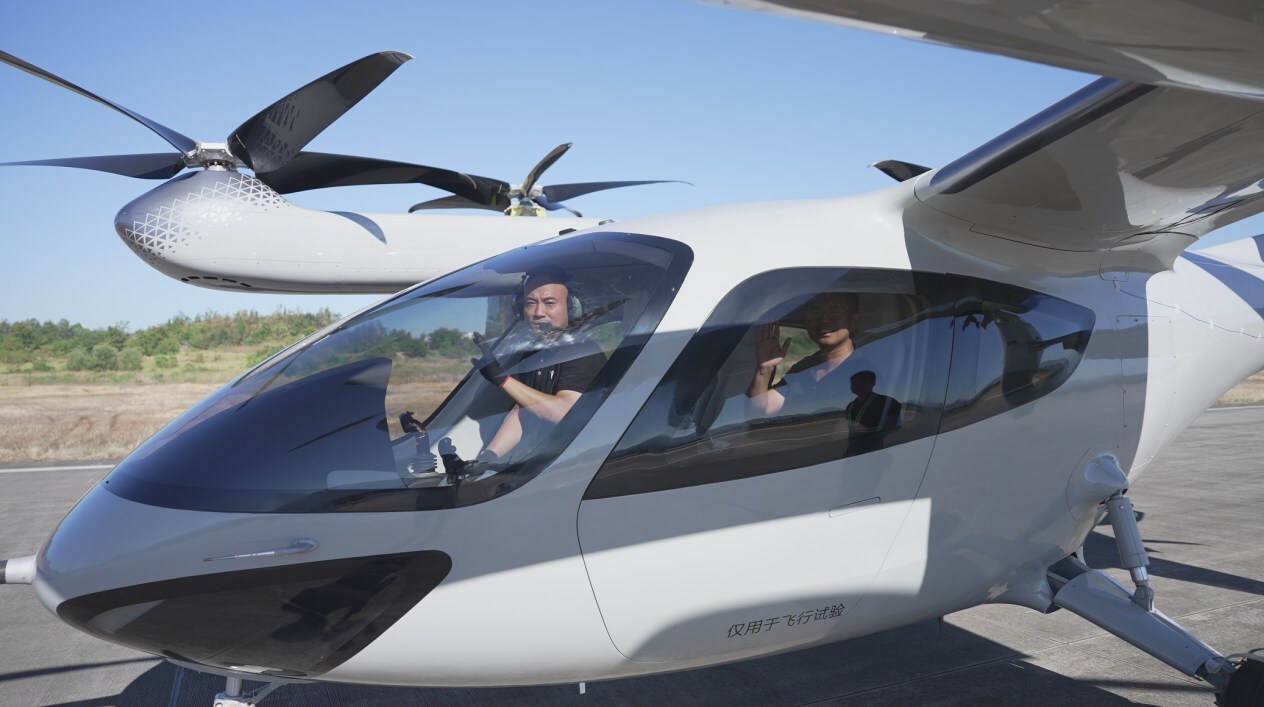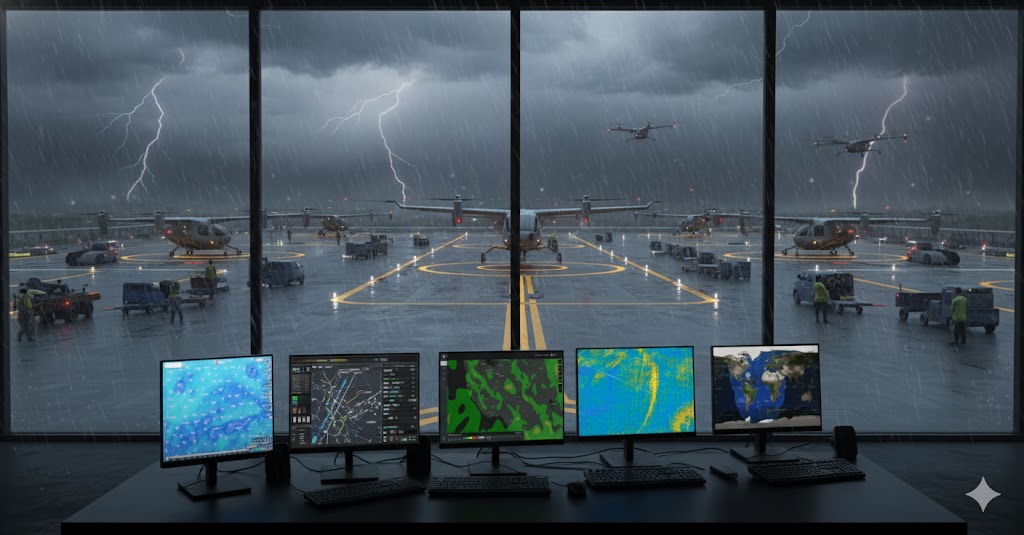The Federal Aviation Administration’s MOSAIC rule and the eVTOL Integration Pilot Program have altered the regulatory landscape for foreign aircraft manufacturers seeking access to the American market. While designed to modernize domestic aviation, these changes have created pathways for Chinese eVTOL companies to enter the U.S. market despite existing trade barriers and certification challenges.
The experimental certificate framework, enhanced by MOSAIC’s expanded capabilities and extended duration periods, offers the most realistic near-term opportunity for foreign manufacturers. Chinese companies, such as EHang, which already hold international certifications, can leverage sophisticated partnership structures and American subsidiaries to participate in demonstration programs while building toward commercial operations.
However, success requires substantial investment in genuine American operations, not a token presence. The next decade is likely to see controlled integration through partnerships rather than direct market entry, as geopolitical tensions continue to shape aviation trade policy more than technical capabilities alone.
Key Regulatory Timeline
June 2025: President Trump signs Executive Order 14307, launching the eVTOL Integration Pilot Program
July 18, 2025: FAA finalizes the MOSAIC rule
August 2025: Israeli company AIR becomes the first eVTOL manufacturer to secure experimental certification under MOSAIC
October 2023: EHang’s EH216-S receives the world’s first eVTOL type certificate from China’s CAAC
Understanding MOSAIC’s Impact
The MOSAIC rule fundamentally restructures the light-sport aircraft landscape and categorizes experimental aircraft. Most significantly for foreign manufacturers, the rule dramatically expands what qualifies as a Light Sport Aircraft.
Key MOSAIC Changes
The new framework eliminates the previous 1,320-pound weight restriction and raises the maximum stall speed from 45 knots to 61 knots. LSAs can now include:
- Up to four seats
- Retractable landing gear
- Constant-speed propellers
- Rotorcraft and powered-lift (eVTOL) aircraft for the first time
Perhaps more importantly, MOSAIC introduces rotorcraft and powered-lift aircraft into the LSA category for the first time. This creates a regulatory pathway that didn’t exist before, potentially allowing foreign eVTOL manufacturers to pursue LSA certification rather than the more challenging Part 23 or Part 25 certification processes.
Enhanced Experimental Aircraft Framework
The rule also significantly modifies categories and operating limitations for experimental aircraft. These changes provide foreign manufacturers with more accessible pathways to demonstrate their aircraft in American airspace, even if commercial operations remain restricted.
MOSAIC extends certificate durations from one to three years, reducing administrative burden and providing more extended test periods for complex aircraft systems. The regulatory shift toward industry consensus standards also benefits experimental operations, allowing manufacturers to reference established technical standards rather than developing case-by-case regulatory interpretations.
The Experimental Certificate Pathway
The most practical route for foreign eVTOL manufacturers to access the American market lies within the experimental aircraft framework, particularly following the implementation of the MOSAIC rule. This pathway provides Chinese and other foreign manufacturers with a legitimate entry point, despite broader certification challenges.
Understanding Experimental Framework Requirements
Under Federal Aviation Regulation 21.191, experimental certificates serve multiple purposes that align well with foreign manufacturers’ market entry strategies:
- Research and development activities
- Demonstrating regulatory compliance
- Crew training programs
- Exhibition purposes
- Air racing participation
- Market surveys
For foreign manufacturers, the research and development category provides the most viable pathway, allowing companies to test new design concepts, equipment installations, and operating techniques.
MOSAIC’s Enhanced Experimental Opportunities
The MOSAIC rule significantly expands the capabilities of experimental aircraft while maintaining safety standards. The performance-based approach now evaluates aircraft on operational characteristics rather than fixed parameters, creating opportunities for innovative designs that might not fit traditional categories.
The most practical route for foreign eVTOL manufacturers to access the American market lies within the experimental aircraft framework, particularly following the implementation of the MOSAIC rule. This pathway provides Chinese and other foreign manufacturers with a legitimate entry point, despite broader certification challenges.
The MOSAIC rule significantly modifies experimental aircraft categories and operating limitations, providing foreign manufacturers with more accessible pathways to demonstrate their aircraft in American airspace, even if commercial operations remain restricted. These regulatory changes create practical advantages that directly support foreign manufacturers’ market entry strategies.
MOSAIC extends certificate durations from one to three years, reducing administrative burden and providing longer test periods for complex aircraft systems. This extended timeframe allows foreign manufacturers to conduct comprehensive testing programs without frequent recertification processes, making American operations more economically viable.
Israeli company AIR’s recent success demonstrates the practical potential of experimental certification under the MOSAIC framework. The company secured experimental airworthiness certification in August 2025, becoming the first eVTOL manufacturer to achieve this milestone under the new framework. AIR immediately began intensive flight testing near West Palm Beach, Florida, using the facility as both a test site and demonstration location for potential customers and partners.
The regulatory shift toward industry consensus standards also benefits experimental operations, allowing manufacturers to reference established technical standards rather than developing case-by-case regulatory interpretations. This standardization reduces uncertainty and compliance costs for foreign companies navigating American regulatory requirements.
The performance-based approach now evaluates aircraft on operational characteristics rather than fixed parameters, creating opportunities for innovative designs that might not fit traditional categories. This flexibility is particularly beneficial for eVTOL aircraft, which often incorporate unique design features that don’t align with conventional aircraft classifications.
The eVTOL Integration Pilot Program Gateway
The eVTOL Integration Pilot Program, launched following President Trump’s Executive Order 14307 in June 2025, presents another potential avenue for foreign manufacturers to explore. The program seeks partnerships between American state and local governments and private companies to demonstrate eVTOL operations.
While the program explicitly requires that selection criteria include “the use of eVTOL aircraft and technologies developed or offered by a U.S.-based entity”, the experimental nature of the program could create opportunities for foreign manufacturers operating through American subsidiaries or partnerships.
The eIPP runs for three years after the first project becomes operational, with at least five pilot projects covering various applications, including air taxis and cargo operations. This timeframe coincides with the period when many Chinese eVTOL manufacturers are likely seeking international expansion opportunities.
Chinese Manufacturing Leadership
Chinese eVTOL manufacturers have achieved remarkable regulatory success in their home market, positioning them as potential competitors in international markets despite American trade barriers.
EHang’s EH216-S secured the world’s first eVTOL type certificate from the Civil Aviation Administration of China (CAAC) in October 2023. The company has subsequently demonstrated its aircraft in 17 countries and received experimental flight authorization in markets such as Brazil. This operational experience provides real-world data that American competitors are still developing.
Similarly, AAutoFlight’s CarryAll became the first certified eVTOL aircraft exceeding one ton maximum takeoff weight. These early certification milestones and operational experience could provide competitive advantages once market access barriers are addressed.
However, these manufacturers face substantial barriers in the American market. The challenge lies in the limited mutual recognition between American and Chinese certification systems. While the FAA and CAAC maintain a Bilateral Aviation Safety Agreement (BASA) signed in 2005, with Implementation Procedures for Airworthiness (IPA) established in 2018, political tensions and safety considerations mean these agencies conduct their own exhaustive review processes rather than simply accepting Chinese certifications.
The trade war has imposed additional barriers, with tariffs on Chinese goods reaching 145% specifically targeting electric vehicles. These prohibitive tariff levels would likely extend to eVTOL aircraft given their advanced technology classification, making Chinese aircraft economically uncompetitive regardless of their technical capabilities.
Regulatory Documentation Standards
The regulatory requirements under 21.193 establish clear documentation standards for foreign applicants:
- Detailed statements of purpose
- Aircraft identification data
- Safety information deemed necessary by the FAA
- Demonstration that the aircraft originates from a country with bilateral airworthiness agreements
Crucially for foreign-manufactured aircraft, applicants must demonstrate that their aircraft originates from a country with which the United States maintains a bilateral airworthiness agreement. The FAA-China bilateral agreement theoretically provides this foundation, though practical implementation faces significant obstacles.
Strategic Market Access Scenarios
Based on current regulatory trends and geopolitical dynamics, three distinct scenarios will likely shape foreign eVTOL access to the American market over the next decade. The transition from regulatory analysis to strategic forecasting requires understanding how technical capabilities interact with political realities.
Controlled Integration Through Partnership Structures
Chinese manufacturers are likely to pursue American market access through sophisticated corporate structures, including U.S.-based subsidiaries, joint ventures, or licensing agreements with American companies. This approach mirrors strategies already employed in other industries facing similar trade barriers.
EHang and other Chinese manufacturers could establish significant American operations, complete with local manufacturing facilities, research centers, and American management teams. This structure enables companies to participate in eIPP programs while maintaining compliance with foreign ownership restrictions.
Success requires substantial capital investment and genuine technology transfer to American entities. Companies following this path must demonstrate clear American interests, including job creation, technology development, and contributions to American competitiveness in the global low-altitude economy.
The experimental certificate pathway provides the regulatory foundation for this approach, allowing foreign-affiliated companies to build operational track records while working toward broader market acceptance.
Regulatory Fragmentation and Parallel Markets
This alternative scenario involves continued divergence between American and Chinese regulatory systems, creating separate and largely incompatible markets for eVTOL operations. This fragmentation would mirror existing challenges in larger commercial aviation, where Chinese aircraft, such as the C919, operate successfully in domestic and select international markets while remaining excluded from major Western markets.
Under this scenario, Chinese manufacturers would focus on developing alternative international markets in Asia, Africa, and Latin America, where regulatory barriers may be lower and Chinese certification standards gain broader acceptance. The rapid growth projections for the Latin American eVTOL market, with an expected compound annual growth rate of 35.8%, suggest significant opportunities exist outside the American and European markets.
This approach would allow Chinese companies to build global scale and operational experience while American manufacturers focus on domestic and allied markets. The result would be two parallel eVTOL ecosystems with limited interoperability.
Crisis-Driven Cooperation
A third scenario involves external pressures that force greater cooperation between American and Chinese aviation authorities. Climate emergencies, urban transportation crises, or major safety incidents could create compelling arguments for international collaboration in the deployment of eVTOLs.
Additionally, competitive pressure from other regions developing successful air mobility systems might prompt American policymakers to reconsider barriers to foreign participation. This scenario would require fundamental shifts in current geopolitical relationships and trade policies.
Success would depend on Chinese manufacturers demonstrating a clear safety record, operational capabilities, and a willingness to operate under American regulatory oversight. The experimental certificate pathway could serve as a testing ground for such cooperation, providing both sides with operational data and experience before broader market opening.
Pathways Forward
Actions for Chinese Manufacturers
Chinese companies that are serious about entering the American market need to establish a more substantial presence. Building legitimate American research and development operations requires substantial commitment that goes far deeper than establishing token offices or hiring local representatives.
Success demands genuine American facilities staffed with qualified personnel, meaningful partnerships with established research institutions, and research programs that advance American interests in eVTOL technology. Companies like EHang cannot simply relocate existing Chinese operations; instead, they must create entirely new American entities with their own technical capabilities and innovation programs.
The three-year experimental certificate duration under MOSAIC creates a realistic timeline for demonstrating this commitment. Companies can use this period to establish operational track records, build relationships with American aviation stakeholders, and present their value to the domestic air mobility ecosystem.
Innovative Chinese manufacturers will simultaneously pursue certification in multiple international markets. This parallel approach builds global operational experience while reducing dependence on American market access. Countries with existing bilateral agreements or mutual recognition arrangements offer more accessible pathways for initial international expansion.
Considerations for American Policymakers
American aviation authorities face the delicate task of balancing legitimate security concerns with the competitive benefits that international participation can bring to the development of air mobility technology. The experimental certificate framework offers a controlled testing environment for evaluating foreign technologies while maintaining necessary oversight and operational restrictions.
Current policy lacks clear criteria for foreign participation in experimental programs. Developing specific guidelines would benefit both foreign manufacturers and American regulators by establishing predictable evaluation processes. These criteria should prioritize American interests while recognizing that eVTOL technology development has become inherently global.
Effective policy frameworks need clear standards for technology transfer requirements, comprehensive security review processes, and appropriate operational limitations. Such guidelines would provide foreign manufacturers with defined pathways while protecting American technological and economic interests.
Industry Preparation Strategies
American eVTOL companies should use their current competitive advantages wisely. The regulatory barriers protecting domestic manufacturers from Chinese competition create a valuable opportunity for building superior products, establishing strong safety records, and integrating capabilities with American infrastructure and regulatory systems.
This protection period enables American companies to concentrate on developing distinctive value propositions rather than competing primarily on cost or manufacturing scale. Companies that establish strong relationships with infrastructure developers, regulatory authorities, and early adopters will maintain advantages even when international competition eventually enters the market.
Infrastructure developers face their own strategic decisions. Vertiport operators and charging network providers should consider international compatibility requirements that could facilitate eventual market integration while maintaining security and regulatory compliance. Building systems that work exclusively with American aircraft may limit future flexibility as global markets develop.
Market Integration Realities
The experimental certificate pathway represents the most realistic near-term opportunity for Chinese eVTOL manufacturers to establish operations in the United States, but success requires more than just regulatory compliance. Companies must demonstrate genuine commitment to American regulatory requirements, invest substantially in local operations, and accept that this process prioritizes safety and security over speed to market.
Full commercial market access depends on geopolitical developments that extend far beyond aviation policy. The next presidential administration’s approach to China trade policy, evolving bilateral aviation agreements, and competitive dynamics in global eVTOL markets will determine whether experimental certification becomes a bridge to broader market access or remains a limited demonstration platform.
American eVTOL companies operate within a framework that provides both protection and eventual competitive pressure. While foreign competition currently faces significant barriers, the experimental pathway ensures that domestic companies will eventually compete with international manufacturers as global markets mature.
The companies positioning themselves for long-term success are building superior products, operational capabilities, and regulatory relationships during this transition period. When international competition does arrive, technical excellence and established market relationships will matter more than regulatory protection.
The Ten Years Ahead
Success for foreign manufacturers will depend less on mastering regulatory technicalities than on demonstrating genuine value to American aviation stakeholders. Companies face the tough challenge of balancing technology capabilities, trade policy restrictions, and national security concerns that are shaping the modern aerospace industry.
The regulatory changes under MOSAIC and eIPP create opportunities, but geopolitical realities and competitive dynamics will ultimately determine how those opportunities develop. Foreign manufacturers entering this market must be patient, possess substantial resources, and have realistic expectations about the time required to establish meaningful American operations while navigating existing political and economic constraints.




